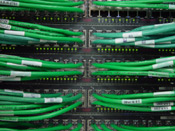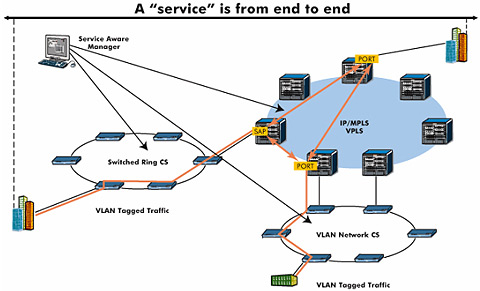
|
The End-to-End Ethernet
By Peter Chahal

We all know Ethernet based on its long history as the LAN connectivity technology of choice. Recently,  Ethernet has made a transition from these traditional roots, maturing into a technology that can boast the same levels of reliability as frame relay and ATM, but can equally still tout its primary benefits as the most scalable and cost-efficient technology. As a WAN service, Ethernet has been complemented with carrier-grade technologies such as multi-layer OAM and end-to-end MPLS/VPLS, so we can rely on it to safely and securely run our most critical business applications and our most critical home applications. Ethernet has made a transition from these traditional roots, maturing into a technology that can boast the same levels of reliability as frame relay and ATM, but can equally still tout its primary benefits as the most scalable and cost-efficient technology. As a WAN service, Ethernet has been complemented with carrier-grade technologies such as multi-layer OAM and end-to-end MPLS/VPLS, so we can rely on it to safely and securely run our most critical business applications and our most critical home applications.
But, engaging in the maturation process is no guarantee that you have fully matured. Carriers must become more operationally efficient to respond to the complexities of an on-demand and IP-converged world. Above all, to stay competitive, their network management systems must evolve to drive new Ethernet service revenues and deliver guaranteed end-to-end SLAs.
Knowledge Provides Profitability and Efficiency
Carrying out fault management and troubleshooting for Ethernet services is quite different than for private line services, even when the Ethernet services are carried over a SONET/SDH network. Packet-based services generate significantly more statistics related to the underlying conditions of the service and the various applications being carried on the service. These statistics, relating to packet latency, throughput, packet loss and jitter, among others, are vital for fault management and ensuring that SLAs are met.
Modern MPLS-based Ethernet services, such as VPLS, provide a rich service layer, but with that richness comes some complexity. Complex networking solutions often use multiple service types, configured in service hierarchies sometimes called “composite services” (CS), to provide an overall networking solution. For example, Figure 1 illustrates an overall service composed of a VPLS network that is connected to two customer located equipment (CLE) Ethernet rings for service delivery. This particular deployment uses two technologies – Layer 2 switching and VPLS for the service delivery. The interworking interface between services, whether logical or physical, is called a service connection point (SCP).
Figure 1 – Simple Ethernet Service Composed of Multiple CS

Next »
| 1 |
2 |
3 |
4 |
Subscribe
Send Comment
© 2005, All information contained herein is the sole property of Pipeline Publishing, LLC. Pipeline Publishing LLC reserves all rights and privileges regarding the use of this information. Any unauthorized use, such as copying, modifying, or reprinting, will be prosecuted under the fullest extent under the governing law.
|
 |




